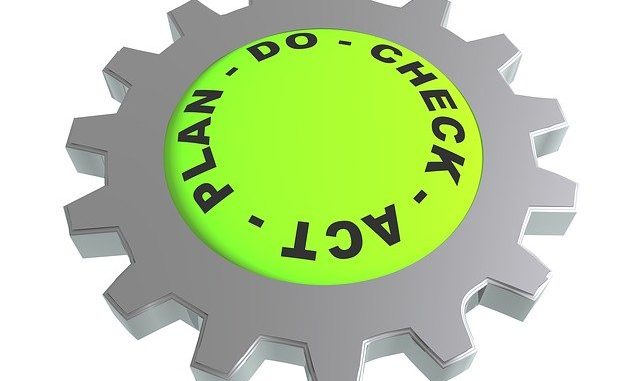
Quality assurance (QA) is a key element to improving customer trust in the manufacture of goods and services. It is primarily about ways to prevent mistakes and minimize defects in manufactured goods or to avoid issues with service and the delivery of those goods to the customer. It has been placed on a firm footing by adherence to the basic system known as ISO 9000 which defines “part of quality management focused on providing confidence that quality requirements will be fulfilled”.
Just to be clear, defect detection as opposed to defect rejection is covered by the discipline of quality control.
ISO9000
ISO 9000 is a series of documents covering a formal quality assurance management system. It is embodied in a Standard which is designed to make sure that quality is built into every stage of the process leading to a service or product. It is a much more involved system than previous methods because it moves away from the concept of quality control by inspection and testing of a product at the end of manufacture. When implemented properly, the Standard helps improve performance continuously. It requires learning by experience and examining any reasons for complaints, failures and discrepancies. The findings are used to develop and build corrective actions into the revised system so that recurrence of the issue is avoided.
The costs of reworking, reducing waste, costly modifications, poor plant performance and use, and imperfect formulation are significantly reduced as a consequence of implementing the Standard.
The intention is to satisfy the customer’s needs and expectations every time with constant improvement. The implementation of ISO 9000 standards also contributes greatly to reinforcing health and safety, to improving environmental standards and dovetailing with other procedures such as HAZOP with its formal checking process. There is also continuous auditing and improvements with reporting and communication.
The Complete Process Of Quality Assurance
Quality assurance follows a defined cycle called the Deming cycle or PDCA cycle. The phases of the cycle are:
- Plan
- Do
- Check
- Act
These steps are repeated so that processes followed in manufacturing are evaluated and improved upon on a periodic basis.
The steps in detail are:-
- Plan- Any organization plans and establishes the process which is directly related to objectives and then processes are developed which deliver the highest quality product.
- Do – the process is developed and tested and then changes made.
- Check – the process is monitored, it may be modified as a result of what is found and checked to see if it matches predetermined objectives.
- Act – Actions are implemented which are designed to make improvements in the processes.
Approaches To Quality Assurance
Total Quality Management (TQM)
Total Quality Management references the system where the quality of a product or service is dependent on a number of participating parts.
Failure Testing
A complete consumer product or service should be tested completely to failure to understand what the weakest elements are. This may take the form of shelf-life testing, exposing a product to a series of rigorous stress tests. These are all designed to uncover properties about the product which can be improved upon. Simple changes can often be made that impact the service. In a beverage manufacturing process for example it may be the case that a nutritional component is highly susceptible to light and/or heat. Ways to improve the lifetime of the nutrient are sought.
Statistical Control
Statistical control is a tool to track product quality throughout manufacturing. Any product can be statistically charted as long as they have a common cause variance or special cause variance to track.
There are a number of systems available which help identify weakness in a system so that a PDCA approach can be employed. The following are all available:-
Quality Management Systems (QMS), auditing and procedural documentation writing CMMI, Six Sigma, Measurement Systems Analysis (MSA), Quality Function Deployment (QFD), Failure Mode and Effects Analysis (FMEA), and Advance Product Quality Planning (APQP).
Leave a Reply